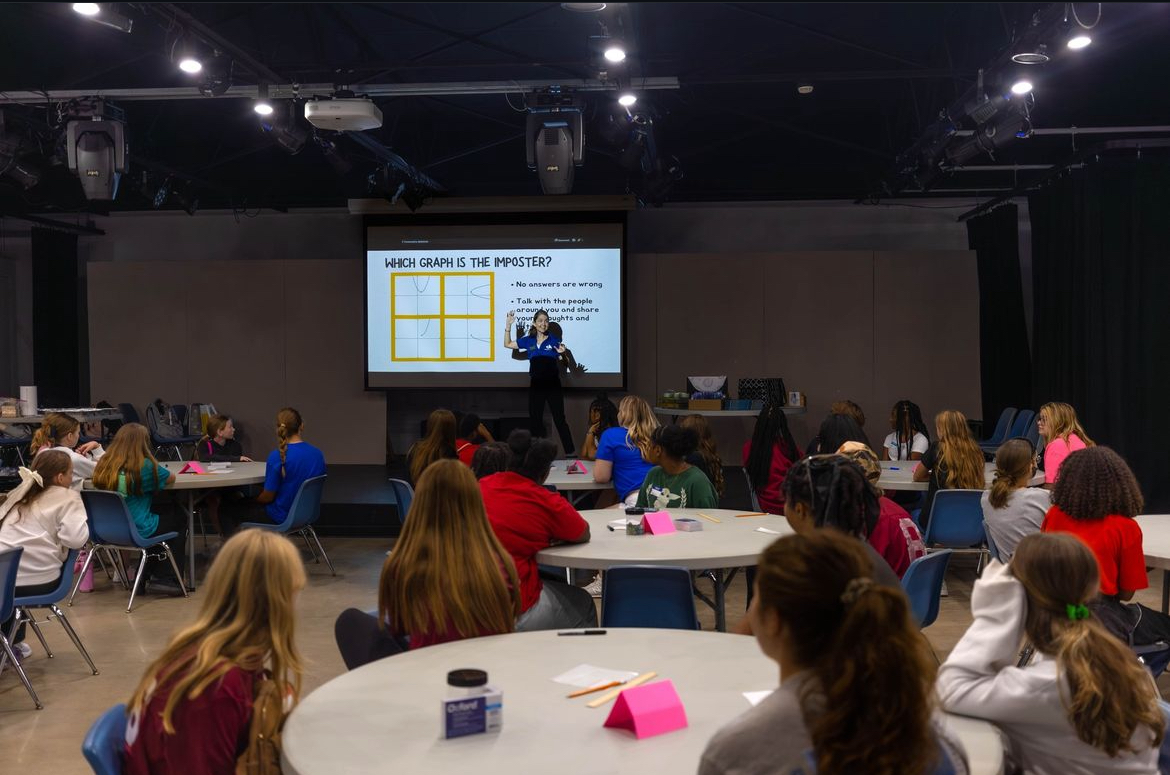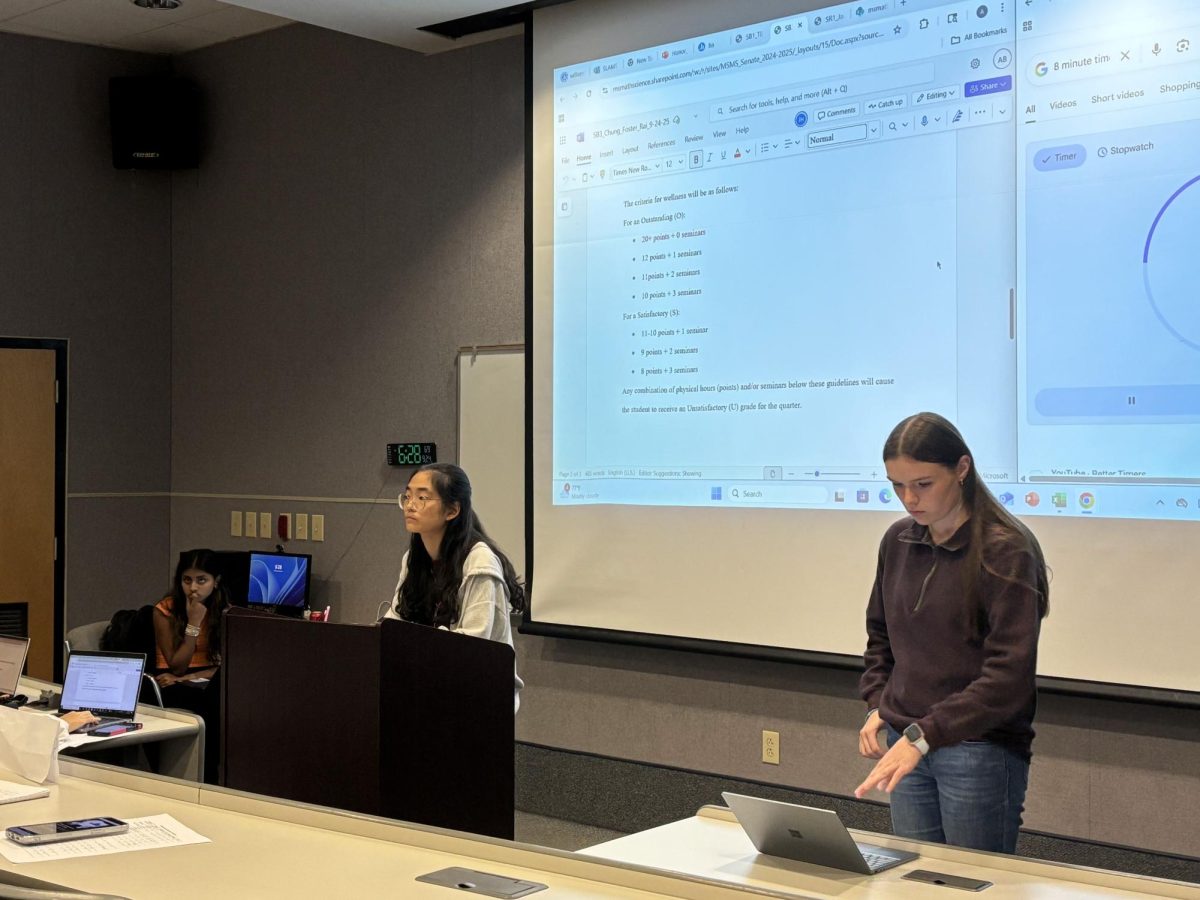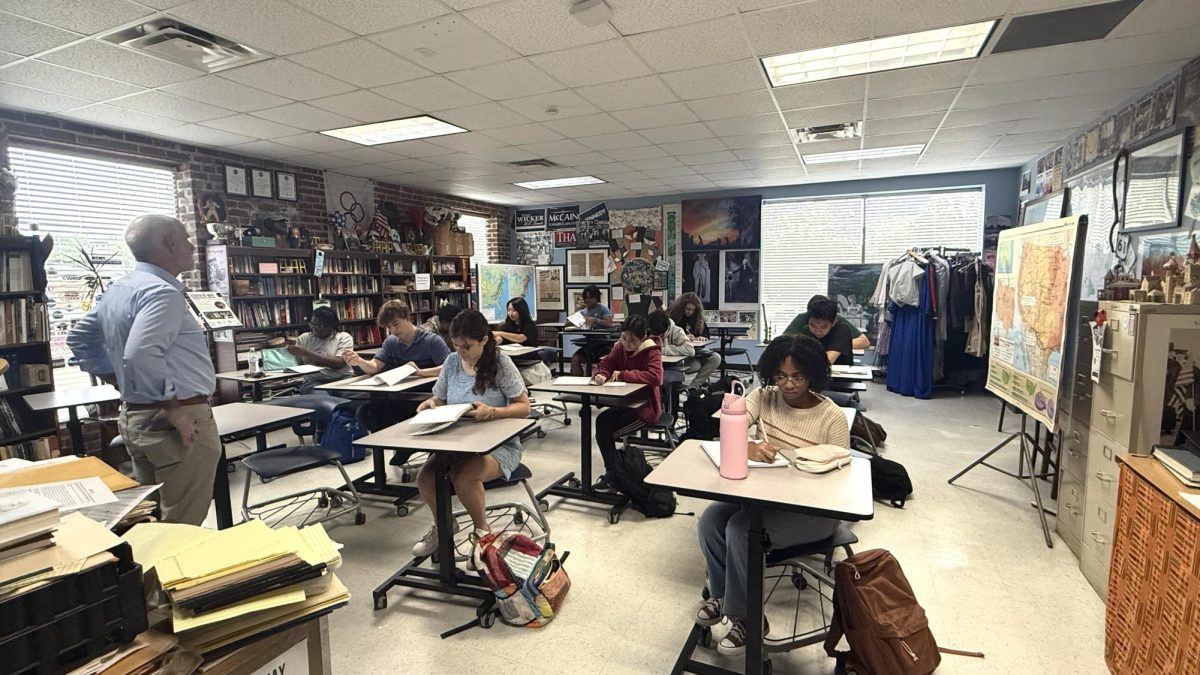Math Outreach club provided young female students from nearby schools with better materials to learn STEM concepts through their Girls Empowered by Math and Science, or GEMS, program in Shackleford Auditorium on Sept. 24.
Club members were assigned to different tables to help explain various math and science concepts to the participating students. The lessons were sprinkled with activities. For example, some activities included stretching rubber bands across a ruler to measure their elasticity and observing the properties of a chemical reaction when mixing water into a solution.
Last year, the GEMS event did not occur, but in previous years, it did. It was a challenge to fit the event into people’s schedules. Senior Ava Nguyen spearheaded the effort to bring GEMS back. She said changes made the event less competitive than in past years, allowing for more growth among the participating Columbus Middle School students.
“I didn’t want it to be about a math competition like in previous years where awards were given for how well certain girls did,” Nguyen said. “I wanted them to [be] empowered by math and science. So, I made GEMS this year more about actual lessons.”
Senior Jennifer Bui said GEMS was a great way to reach out and help young women while creating enjoyment in science and math.
“It was really cool because I’ve never had an experience like it. So, being able to teach them and show them, ‘Oh, it’s kind of amazing being a woman in STEM’ is really satisfying,” Bui said.
Junior Claire Rhee said GEMS was exciting because of the great connection and communication between each middle school student she had the opportunity to mentor.
“I helped the girls work as a team and communicate with each other, hoping that they had a good time as I did,” Rhee said. “We separated into grades and did a math activity where I helped my group launch rubber bands across a ruler.”
Andrew Dowdy said GEMS aims to provide underrepresented women with a STEM experience that applies concepts in a fun way.
“GEMS tries to approach it from a more fun logic-based perspective, where they take those procedures and formulas that they’re familiar with and make students actually think,” Dowdy said. “They use games [and] various activities, so they’re actually having fun with the math that most kids would find boring and procedural in normal schools.”








